by Jenny Savely | Dec 19, 2015
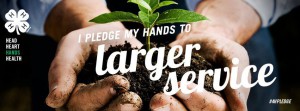
Clear evidence of mastering a skill is being able to employ it in one’s everyday life. Knowledge is only as good as how we are able to use it. 4-H dedicates itself to educating youth with research based curriculum not only for their own benefit but also so they can share that knowledge with others. When we “pledge our hands to larger service”, this can take on many forms. It may look like teaching youth in a community center about robotics or gardening, making meals for the military and first responders, or cleaning up trash in local parks. In all our service, it is important that regardless of what this looks like that we focus on meeting a need in our community. Identifying these needs is sometimes difficult if they are not part of what we see around us regularly. Talking to people who do not have the same life experiences we do is a good way to start seeing the world in a different way and thinking about ways you can help others who haven’t had the same opportunities. In Escambia County, around 30% of our youth population lives in poverty (US Census). Outcomes of living in poverty are hunger, poor housing, poor health, and lower educational scores, just to name a few. Our 4-Hers are learning to use the skills they have gained in 4-H in creative ways to help address some of these issues. One club has received a grant to raise a hog that a youth will show and have processed so the meat can be included in food boxes for local families. Another club raised funds to help support the Council on Aging to provide air conditioning units to the elderly, who are more likely to be impoverished, during the hot summer months.
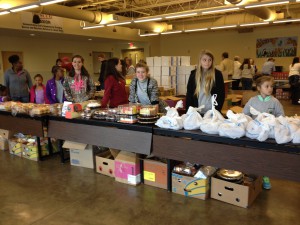
Escambia County 4-Hers assemble food boxes for local families at this year’s Farm to City event.
Whether poverty, pollution, safety, education, healthcare, or another issue is one that effects your community, the skills youth learn through 4-H can help address it. Not only does this help those around us live healthier and more productive lives, but it helps those who serve connect to their community and learn to give back. As with all 4-H projects, our goal is to help youth become more engaged and knowledgeable citizens that contribute to their world in positive ways. We encourage our youth to embody the spirit of generosity all year long, but during this season, be sure to explore the needs in your community you can help to change, even in the smallest way. If you need help thinking of how to best give back, contact your local 4-H Agent, local non-profits, or look up your county’s information in a database such as the US Census’ QuickFacts (http://quickfacts.census.gov/qfd/states/12000.html) and think about what kinds of problems might arise from the information you find there.
4-H also offers many Leadership and Citizenship projects that can help youth navigate assessing the needs of their community and putting their skills to use. You can find a few such project guides at the following links:
If you are interested in helping guide the next generation to be compassionate, active citizens for tomorrow, consider becoming a 4-H Volunteer. 4-H offers a wide variety of roles to fit your interests and schedule. Visit http://florida4h.org or contact your local UF IFAS Extension Office.
US Census. 2015. American Community Survey 2009-2013 five-year estimates, Children Characteristics: Escambia County, FL. Accessed November 18, 2015.

by Melanie Taylor | Dec 11, 2015
 The holidays are often filled with time-honored traditions that include some of our favorite meals and foods. As you celebrate, think of little changes you can make this holiday season to create healthier meals and active days. An added bonus, these small changes may help you to avoid those extra holiday pounds we all fear each year. Happy Cooking!
The holidays are often filled with time-honored traditions that include some of our favorite meals and foods. As you celebrate, think of little changes you can make this holiday season to create healthier meals and active days. An added bonus, these small changes may help you to avoid those extra holiday pounds we all fear each year. Happy Cooking!
In the Kitchen:
• For gravies or sauces — if you are making pan gravy, first skim the fat off pan drippings. For cream or white sauces, use fat-free (skim) milk and soft tub or liquid margarine.
• For dressings or stuffing — add low-sodium broth or pan drippings with the fat skimmed off instead of lard or butter. Use herbs and spices and a whole grain bread for added flavor.
• For biscuits — use vegetable oil instead of lard or butter and fat-free (skim) milk or 1 percent buttermilk instead of regular milk.
• For greens — use skin-free smoked turkey, liquid smoke, fat-free bacon bits, or low-fat bacon instead of fatty meats.
• For sweet potato pie — mash sweet potato with orange juice concentrate, nutmeg, vanilla, cinnamon, and only one egg. Leave out the butter.
• For cakes, cookies, quick breads, and pancakes — use egg whites or egg substitute instead of whole eggs. Two egg whites can be substituted in many recipes for one whole egg.
• Use unsweetened applesauce or mashed ripe bananas instead of butter.
• Try cutting the amount of sugar listed in recipes in half.
• Use spices to add flavor such as cinnamon, allspice, or nutmeg instead of salt.
• Try baked apples with cinnamon and a sprinkle of sugar instead of apple pie.
• Invite your guests to make their own parfait with colorful sliced fruit and low-fat yogurt.
For meats and poultry (chicken and turkey):
• Trim away all of the visible fat from meats and poultry before cooking.
• Take off poultry skin before eating.
• Broil, grill, roast, poach, or boil meat, poultry, or fish instead of frying.
• Drain off any fat that appears during cooking.
• Chill meat and poultry broth until fat becomes solid. Skim off fat before using the broth.
• Skip or limit the breading on meat, poultry, or fish. Breading adds fat and calories. It will also cause the food to soak up more fat during frying.
• Choose and prepare foods without high fat sauces or gravies.
When Shopping:
• Start with a lean choice.
• The leanest beef cuts include round steaks and roasts (round eye, top round, bottom round, round tip), top loin, top sirloin, and chuck shoulder and arm roasts.
• The leanest pork choices include pork loin, tenderloin, center loin, and ham.
• Boneless skinless chicken breasts and turkey cutlets are the leanest poultry choice.
Use the food label to help you choose
• Choose extra lean ground beef. The label should say at least “90% lean.” You may be able to find ground beef that is 93% or 95% lean.
• Processed meats such as hams, sausages, frankfurters, and luncheon or deli meats have added sodium. Check the ingredient and Nutrition Facts label to help limit sodium intake.
• Fresh chicken, turkey, and pork that have been enhanced with a salt-containing solution also have added sodium. Check the product label for statements such as “self-basting” or “contains up to __% of __.”
• Lower fat versions of many processed meats are available. Look on the Nutrition Facts label to choose products with less fat and saturated fat.
De-Saturate
• Use a nonstick pan with vegetable cooking oil spray or a small amount of liquid vegetable oil instead of lard, butter, shortening, or other fats that are solid at room temperature.
Enjoy the Food, Fun, Friends and Family!
Cheers to Good Health
• Quench your thirst with low-calorie options. Drink water with lemon or lime slices. Offer seltzer water with a splash of 100% fruit juice.
Be the Life of the Party
• Laugh, mingle, dance, and play games. Focus on fun and enjoy the company of others.
Give to Others
• Spend time providing foods or preparing meals for those who may need a little help. Give food to a local food bank or volunteer to serve meals at a shelter during the holiday season. Giving back is a great mood booster.
Make Exercise a Part of the Fun
• Make being active part of your holiday tradition. Have fun walking and talking with family and friends after a holiday meal. Give gifts that encourage others to practice healthy habits such as workout DVDs, running shoes, and reusable water bottles.
Enjoy the Leftovers
• Create delicious new meals with your leftovers. Add turkey to soups or salads. Use extra veggies in omelets, sandwiches, or stews. The possibilities are endless!
Be sure your family and friends enjoy the food and fun, but focus on the time together. Remember this season is all about the memories, not just the food. You will feel better and enjoy your holiday time with less worry if you focus on staying healthy this season.
Source: USDA United States Department of Agriculture – www.MyPlate.gov
by Marcus Boston Jr. | Nov 26, 2015
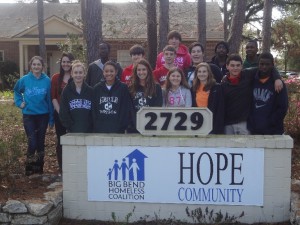
Leon County 4-Hers grow gratitude and compassion through service-learning
Developing a heart for giving back and helping others is one of the most important personal benefits youth can obtain through active involvement in a 4-H program. During this season of thanks , 4-H members all over the United States will put the third sentence of the 4-H pledge into action as they “pledge their hands to larger service” by planning and carrying out a multitude of community service activities to help families that are in need. Since its inception in the early 1900’s the 4-H program has place an emphasis on improving the community in which they live through the guidance and care of adult volunteers.
As we pause this week to celebrate the season of “Thanks” we must also remember to emphasize to our youth that the focus should not be on who can consume the most food, but instead to use the meal as a vehicle to connect with family and friends while enjoying their company. Adults and youth alike should take a pledge during the meal time that no one will post, text, or make a call during family time…but instead exercise some of the great communication skills they have learned in 4-H and get to know each other better. It’s amazing how much our families and friends don’t know about us even though we see them almost every day. Youth should also be encouraged to think of those that are less fortunate and seek out ways they can help those in need as a club, family or as an individual project. A great club or family game can be initiated that requires youth, friends and family members to write a list of all the things they are thankful for and provide fun prizes for the winners… which should be everyone that participates.
As a 4-H Youth Development Professional I am also grateful that the largest serving youth program in the world continues to make a positive impact on the lives of young people. Using the 4-H pledge as a guide I have shared just a few impacts below.
I pledge my head to clearer learning…”I’m thankful that through active participation in a variety of programs and activities youth are learning decision making skills that will help them in school and later in life as they develop into responsible adults”.
I pledge my heart to greater loyalty…” I’m grateful that continual 4-H club involvement provides youth an opportunity to build caring relationships with members of the club as well as the adult volunteer leaders.
I pledge my hands to larger service…I’m thankful that the community service projects that are carried out in each club entitles you to make someone’s life a little brighter.
I pledge my health to better living for my club, my community, my country, and my world….I’m thankful that through their participation and completion of projects youth are learning what to put in their bodies to keep them healthy as well as what not to put in them.
 Let’s continue to use 4-H as a vehicle to make our world better by taking time to invest in your future leaders of tomorrow…..our 4-H members of today. Help 4-H continue to grow by joining as a member or volunteer. Florida 4-H offers a wide variety of programs and volunteer roles to fit your skills, interests, and schedule. Contact your local UF IFAS County Extension Office, or visit http://florida4h.org.
Let’s continue to use 4-H as a vehicle to make our world better by taking time to invest in your future leaders of tomorrow…..our 4-H members of today. Help 4-H continue to grow by joining as a member or volunteer. Florida 4-H offers a wide variety of programs and volunteer roles to fit your skills, interests, and schedule. Contact your local UF IFAS County Extension Office, or visit http://florida4h.org.
by Melanie Taylor | Oct 16, 2015
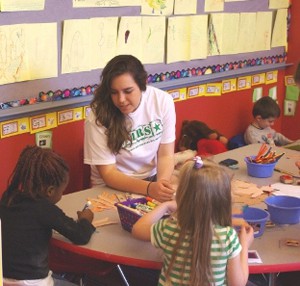 Civic engagement is a broad term that describes the process developing the knowledge, skills, and motivation to improve the quality of life in a community, through either political or non-political processes. Thomas Ehrlich, the author of Civic Engagement and Higher Education, states “a morally and civically responsible individual recognizes himself or herself as a member of a larger social fabric and therefore considers social problems to be at least partly his or her own; such an individual is willing to see the moral and civic dimensions of issues, to make and justify informed moral and civic judgments, and to take action when appropriate.” “Developing youth who take interest in understanding social and community issues is a fundamental philosophy of 4-H. This interest is a learned behavior and is best approached by meeting the youth where they are, rather than club leaders prescribing citizenship opportunities for them,” shares Stacey Ellison, the 4-H Regional Specialized 4-H Agent providing leadership for civic engagement. “To find that out, ask youth what are they interested in? What concerns them about their community? How do they see themselves as part of the solution?” A great resource for helping club leaders facilitate these types of discussions is the 4-H Civic Engagement Guide for Afterschool Clubs.
Civic engagement is a broad term that describes the process developing the knowledge, skills, and motivation to improve the quality of life in a community, through either political or non-political processes. Thomas Ehrlich, the author of Civic Engagement and Higher Education, states “a morally and civically responsible individual recognizes himself or herself as a member of a larger social fabric and therefore considers social problems to be at least partly his or her own; such an individual is willing to see the moral and civic dimensions of issues, to make and justify informed moral and civic judgments, and to take action when appropriate.” “Developing youth who take interest in understanding social and community issues is a fundamental philosophy of 4-H. This interest is a learned behavior and is best approached by meeting the youth where they are, rather than club leaders prescribing citizenship opportunities for them,” shares Stacey Ellison, the 4-H Regional Specialized 4-H Agent providing leadership for civic engagement. “To find that out, ask youth what are they interested in? What concerns them about their community? How do they see themselves as part of the solution?” A great resource for helping club leaders facilitate these types of discussions is the 4-H Civic Engagement Guide for Afterschool Clubs.
How do 4-H parents and volunteers know if they are “doing” civic engagement in their club? You know you are on the right track when civic engagement opportunities:
- Provide meaningful service that directly relates to community or youth needs.http://www.4-h.org/about/youth-development-research/positive-youth-development-study/
- Provide supervision by caring adults who have been screening and oriented to their roles.
- Teach critical skills, such as subject matter knowledge or skills (babysitting, CPR, etc.) and/or life skills like problem solving, leadership, teamwork and life skills
- Foster youth adult partnerships. Meaningful youth engagement views youth as equal partners with adults in the decision-making process. Programs and activities are developed with youth, rather than for youth. In this kind of equal partnership, both adults and young people need to be fully engaged, open to change in how things are done, and share a unified vision for the partnership.
- Adults and stakeholders view youth as a resource. Youth programs are strengthened when they involve and engage youth as equal partners, ultimately providing benefits both for the program and for the involved youth. Positive youth development also has its origins in the field of prevention. In the past, prevention efforts typically focused on single problems before they surfaced in youth, such as teen pregnancy, substance abuse and juvenile delinquency.
- Celebrate success and recognize youth (ex: 4-H Awards & Recognition Programs, 4-H program awards, ribbons, plaques, etc.)
Youth can provide added energy, ideas, and value to organizations through youth volunteering efforts. Stacey shares one of the easiest ways for clubs to get involved and have an impact in not only their community, but statewide: “One of our biggest impacts in Florida 4-H has been through our annual state service projects. While clubs across the state undoubtedly have tremendous local success in various projects, the state project seeks to join the efforts of all Florida 4-Hers to benefit one particular cause. With more than 230,000 4-H members working towards the same cause- we can make tremendous impact on the state of Florida! This year’s state 4-H service project is, “Clothing the World.” This is a project selected by the youth members of our Florida 4-H Executive Board State Project committee. The youth saw a need to provide for one of the most basic needs of people around the world- clothing. Clubs are encouraged to conduct their own clothes drives and volunteer with like-purposed charitable organizations to benefit their local communities.”
Civic engagement is major factor in 4-H positive youth development. The Tufts Study on Positive Youth Development found that compared to their peers, 4-H’ers are:four times more likely to make contributions to their communities and two times more likely to be civically active. If you would like to help Florida 4-H grow the next generation of civically engaged young adults, consider becoming a volunteer. Visit http://florida4h.org/volunteer or contact your local UF IFAS County Extension Office for more information.
Resources: www.florida4h.org/, https://edis.ifas.ufl.edu/wc073 (EDIS Publication #AEC392 – Learning by Doing: Utilizing Service-Learning Projects), www.youth.gov, www.IndependentSector.org
by Julie Pigott Dillard | Oct 6, 2015
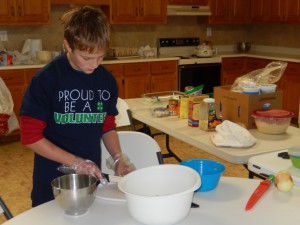
4-Her Isaac Brooks helped prepare meals for hospice patients as part of his 4-H Community Service Project.
With 4-H’s long history of community service and service learning built into the structure of the club model, 4-H members are poised to develop skills that make them highly valued students and eventually adults. And while grades and ACT or SAT scores used to be standard criteria for college admission, colleges and universities are looking for a well-rounded student in the highly competitive field of freshman admission.
By engaging in community service work, youth have the ability to explore their interests and find where their passions lie, show others what they believe in and define possible career paths. Community service also gives youth the ability to learn experientially and see that their contribution to a cause, project or event can make a difference.
Teenlife.com defines just a few of the personal benefits of youth volunteering as:
- Developing an increased sense of social responsibility
- Developing a global view of society
- Developing a heart for giving back and helping others
- Providing opportunities to apply what they’ve learned to real human needs
- Building relations and social connectedness with peers and adults
- Improving communication and critical thinking skills
- Helping find passions and interests that may leader to future career options.
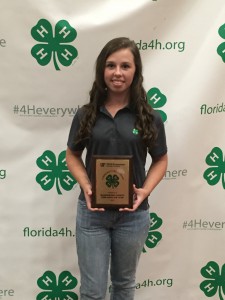
4-Her Jessica Wells accepted a Florida 4-H Community Pride Top 5 Project award on behalf of the Fire Ants 4-H Club at 4-H University.
In addition to the 4-H Community Service Project, 4-H helps fund projects through the Community Pride Program. This program helps members learn about their community and encourages them to improve their environment through completion of a service learning project. Grant funds awarded through the Florida 4-H Foundation help supplement the project. Once the project is complete, a final report is submitted for statewide competition and recognition at 4-H University as a Top 5 Florida 4-H Community Pride Project. Florida 4-H also offers similar opportunities through the Marine Ecology Program which awards mini funds to 4-H clubs to execute Service Learning in Aquatic and Marine Education and Conservation through a gift from the Guy Harvey Foundation. Community service has the ability to become life changing – for the youth involved and for those who are receiving their service.
If you would like to help 4-H grow the next generation of compassionate adults who are civically engaged, then become a volunteer. 4-H offers a wide variety of volunteer opportunities based on your skills, interests and schedule. For more information, contact your local UF IFAS Extension Office or visit http://florida4h.org/volunteers.
Tomorrow, learn how 4-H Grows Curiosity!
by Stefanie Prevatt | Jul 17, 2015
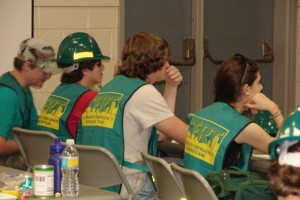
4-H Teens learn how to respond to emergencies as well as careers related to emergency management and safety through the CERT program. Leon County Extension photo.
It’s mid-summertime. Tourists are flocking to beaches like seagulls to bread. Summer camps and in full swing and so are daily afternoon thunderstorms. In Florida, torrential rain, lightening, and thunderstorms are so common place they often aren’t treated with due respect. However, one group of 4-H teens and adult volunteers in Leon County have been working with disaster preparedness for six years and understands just how quickly Mother Nature can turn from beautiful to dangerous.
The Teen Community Emergency Response Team (CERT) is a unique organization that teaches participants leadership, readiness and response skills. Teens recognize hazards, man-made or natural, in order to prevent a possible disaster. Teens participating in the program are trained to safely respond to an emergency and assist victims without endangering themselves. Examples of what youth learn are:
- extinguishing small fires
- conducting light search and rescue
- setting up medical treatment areas
- assisting emergency responders
Members of the Leon County 4-H Teen CERT Club have been actively involved in natural disaster preparedness for four years. While not all members are official teen CERT members, all youth are active in learning about disasters and how to be the most prepared. Members are actively engaged in their community – passing out literature on disaster preparedness. In addition, members of 4-H Teen CERT participate in an annual first responder training exercise held at the Tallahassee Regional Airport. Our youth pose as victims of a disaster and are given the opportunity to interact with working first responders. This opportunity allows youth to interact with professionals in the field as well as understand the details that go in planning and preparing for emergency situations.
Teen CERT has been a wonderful addition to the Leon County 4-H program. Adults and youth who participate are more aware of situations that could potentially pose harm to members and bystanders. Youth are always quick to help adults remember the first aid kit and are always willing to lend and extra hand. In addition to training youth who are ready and able to respond, CERT has trained leaders who give back to their club and organization!
For more information about Teen CERT, please visit: https://www.fema.gov/community-emergency-response-teams/teen-community-emergency-response-team.
UF IFAS Disaster and Recovery information (includes a homeowner handbook and hurricane preparedness for homeowners and ag producers)
Want to help youth in your community learn how to respond to emergencies or about careers related to community safety? If you would like to start a 4-H Teen CERT club, or serve as a speaker or project leader for 4-H disaster preparedness programs, please contact your local UF IFAS Extension Office or visit http://florida4h.org/volunteers.










